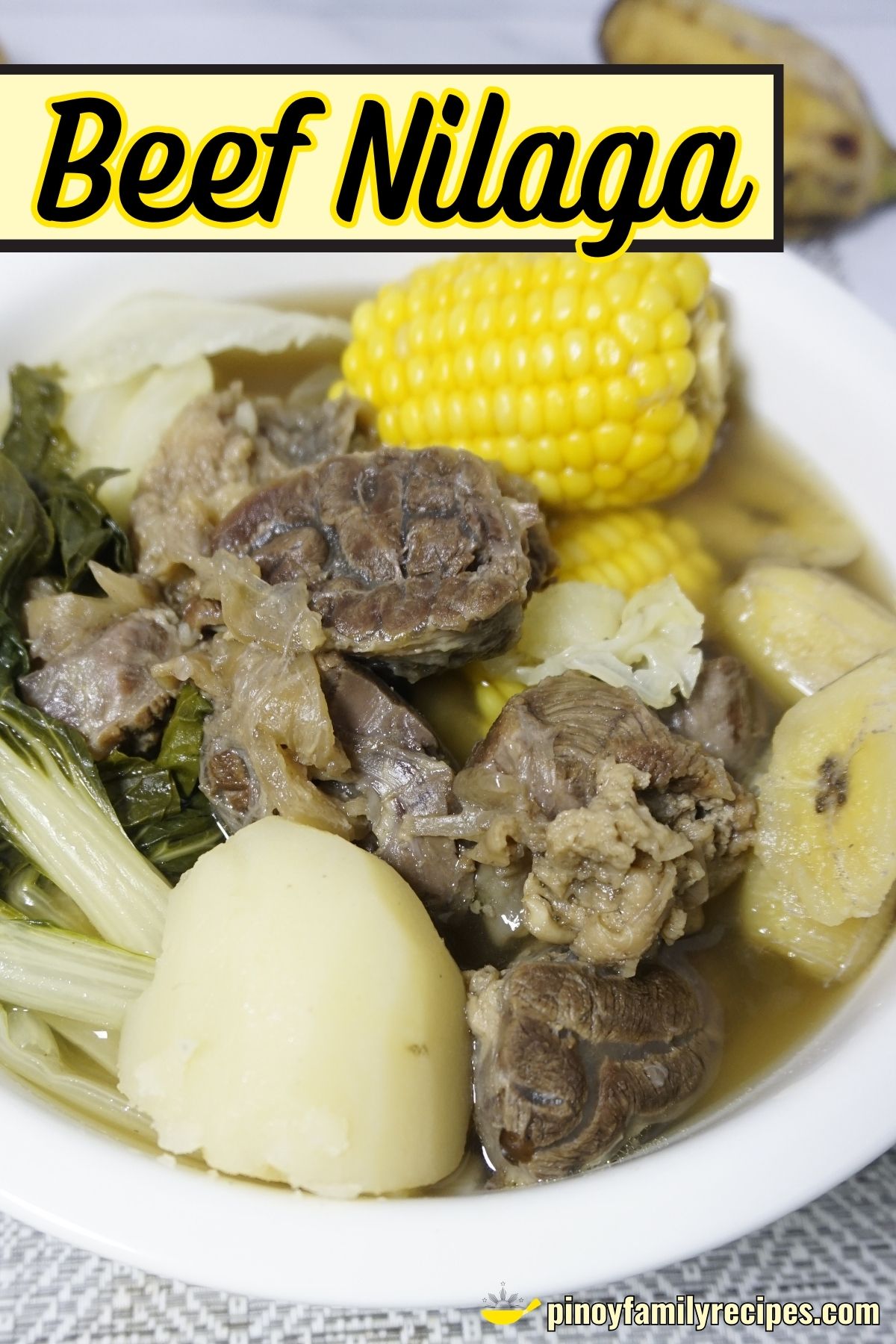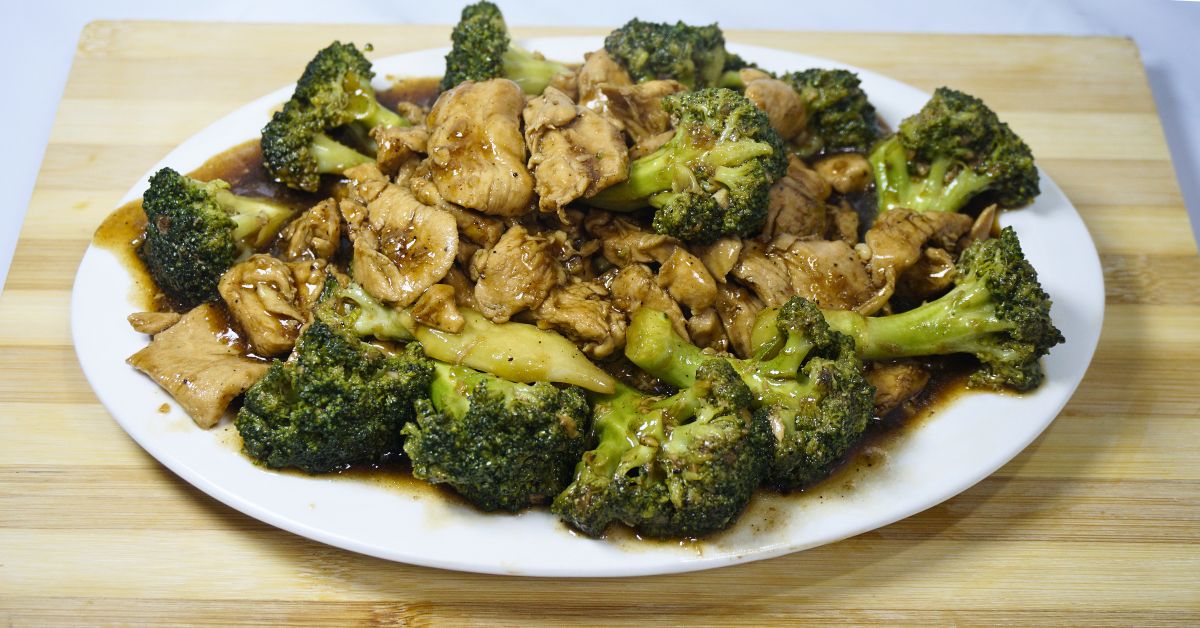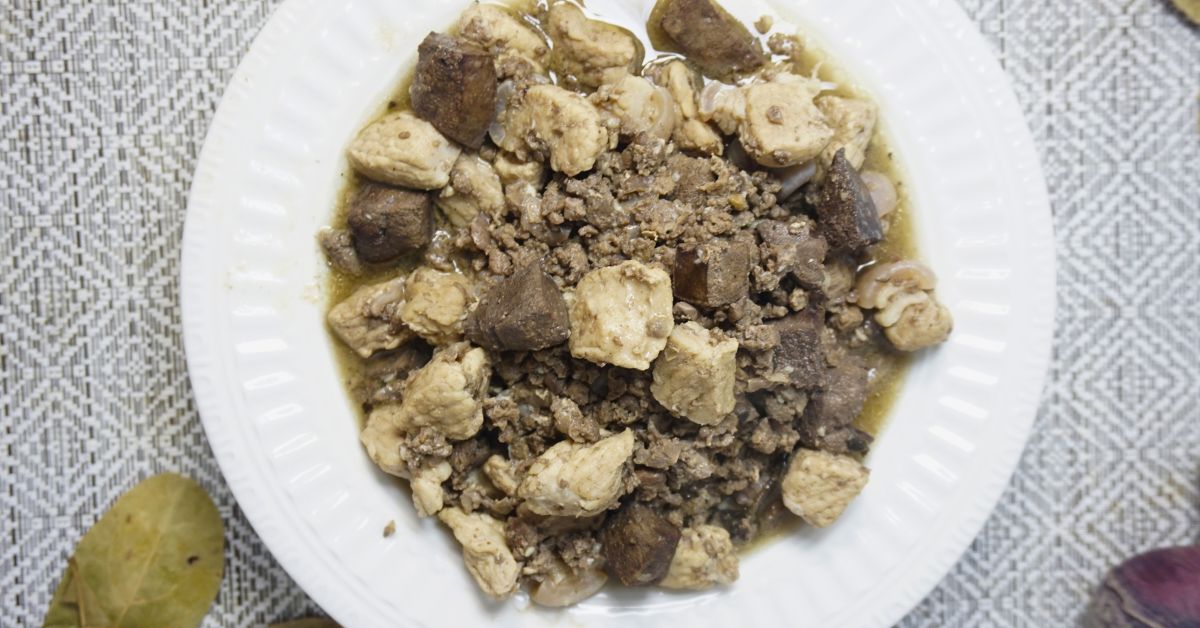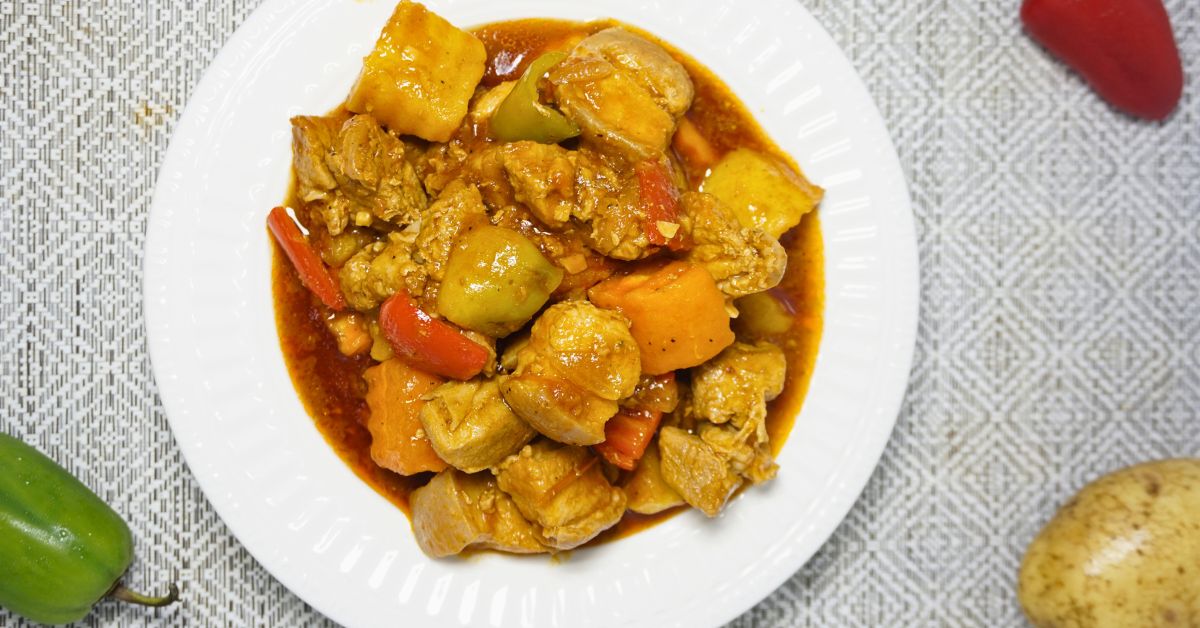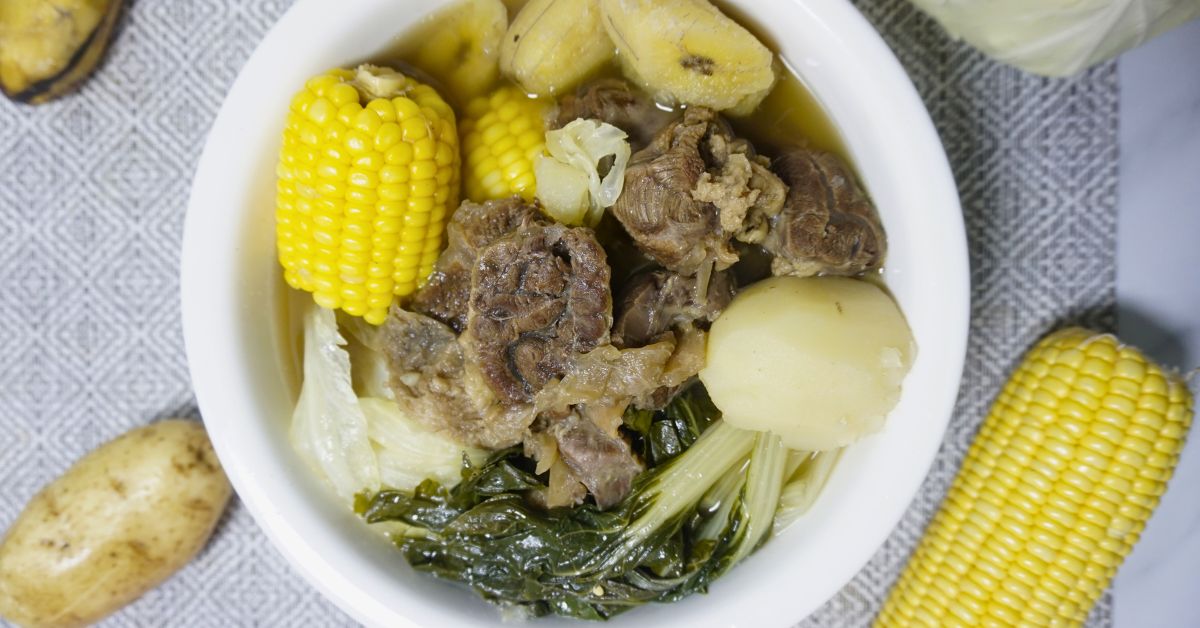
What’s more comforting than a sip of beefy soup from a nilagang baka? I love pork nilaga, but beef nilaga has that rich and hearty flavor that’s hard to beat. The tender beef, soft vegetables, and flavorful broth make it a favorite for family meals, especially during rainy days. The best part? It’s super easy to cook, and you don’t need fancy ingredients to make it taste good.
Whenever I cook this dish, I make sure that I prepare enough rice because the savory broth and tender beef are best enjoyed with a heaping scoop of rice. Trust me, you’ll want to soak up every drop of that delicious soup! And of course, I won’t forget the fish sauce (patis) with chopped siling labuyo and a splash of calamansi on the side. That spicy and tangy kick adds an extra layer of flavor that makes the meal complete. It’s definitely a cheat day for everyone, but totally worth it!

Nilagang Baka vs Bulalo - What’s the Difference?
I also got confused about this before. It’s funny because when we order nilagang baka or bulalo in restaurants, I don’t even think about any difference. To be honest, they both look and taste pretty similar. But the real difference is really simple.
Bulalo has that rich broth thanks to the bone marrow, which makes it a bit more special. Meanwhile, nilagang baka is a bit simpler, focusing more on the beef itself. But at the end of the day, both are comforting and perfect for a hearty meal!
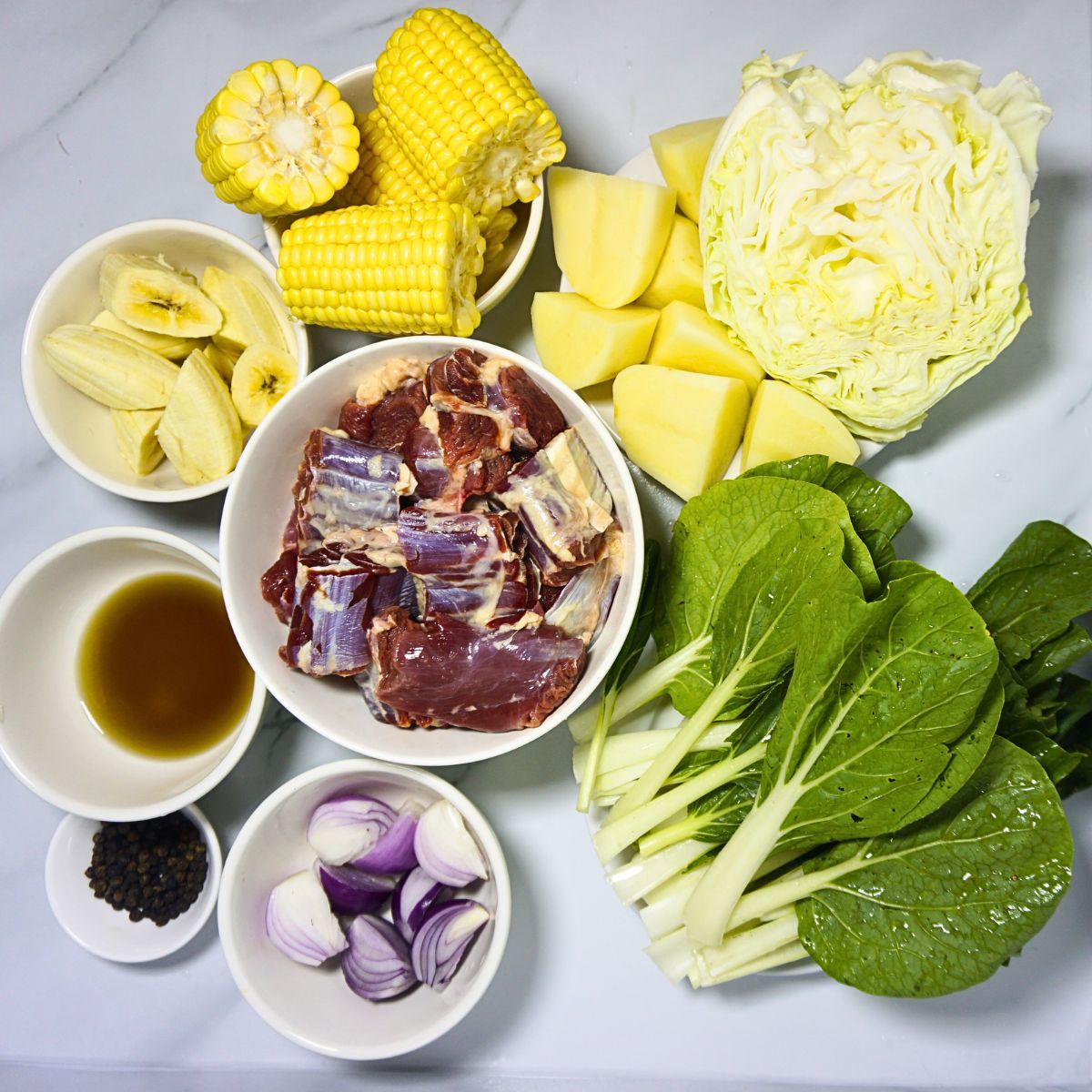
Nilagang Baka Ingredients
Beef Shanks: These are perfect for nilaga, with the bone adding extra flavor to the broth, and the meat turning tender after slow cooking.
Onion and Black Pepper (Whole): These two add a nice base of flavor to the broth—simple but essential for a comforting soup.
Fish Sauce: This adds that salty umami taste that brings out the best in the beef and gives the soup that distinct Filipino flavor.
Corn and Potatoes: The corn adds a touch of sweetness, while the potatoes make the dish more filling. Both soak up the savory broth beautifully.
Saba Bananas: These give a slight sweetness to the soup, balancing out the savory flavors. They’re a must in nilaga!
Cabbage and Pechay: These leafy greens are added towards the end, giving the soup a fresh and healthy touch. They cook quickly and add a nice texture.
Salt: This basic seasoning helps you adjust the final taste to your liking, ensuring everything is perfectly balanced.
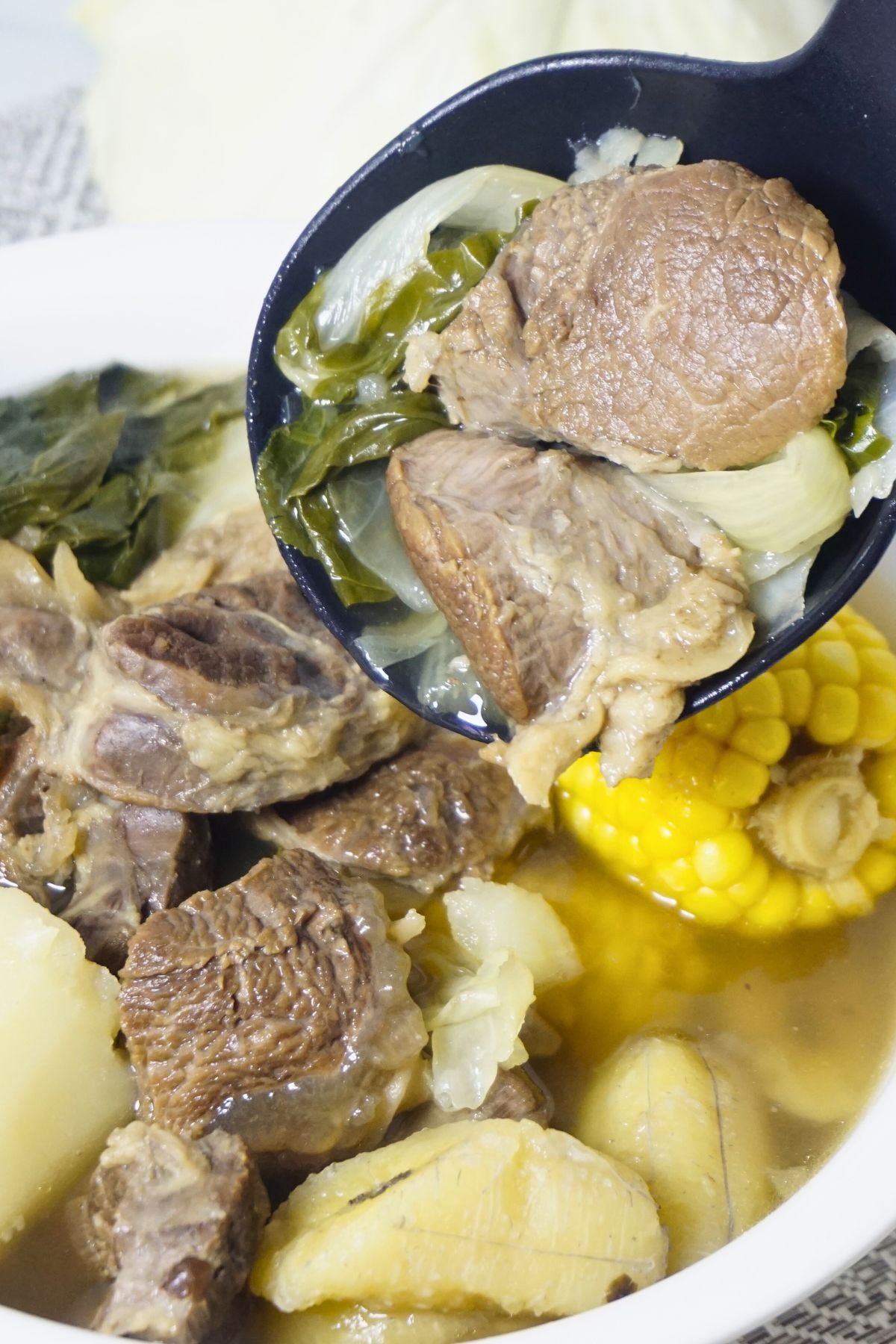
How to Cook Nilagang Baka
Combine Beef and Water
In a large pot, combine the beef shanks with 10 cups of water. Bring it to a boil over medium heat. Make sure to skim off any scum that rises to the surface to keep the broth nice and clear.
Simmer the Beef
Once the scum is removed, add the quartered onion and whole black pepper. Lower the heat and let it simmer for about 1.5 to 2 hours, or until the beef is tender. If you’re using a pressure cooker, you can cut the cooking time to 30-40 minutes to save time.
Add Fish Sauce
When the beef is tender, stir in the fish sauce. This adds a great depth of flavor to the broth.
Cook Corn and Potatoes
Next, add the corn pieces and quartered potatoes to the pot. Let them simmer for about 10-15 minutes, or until the potatoes are tender. This makes the soup heartier.
Add Saba Bananas
Add the saba bananas and continue simmering for another 5-7 minutes. The bananas should be cooked through but still hold their shape.
Add Cabbage and Pechay
Finally, toss in the cabbage quarters and pechay. Simmer for just 2-3 minutes, until the vegetables are tender but still crisp. This adds a fresh crunch to the dish.
Season and Serve
Taste the broth and season with salt as needed. Serve hot with steamed rice and enjoy your comforting bowl of Nilagang Baka!
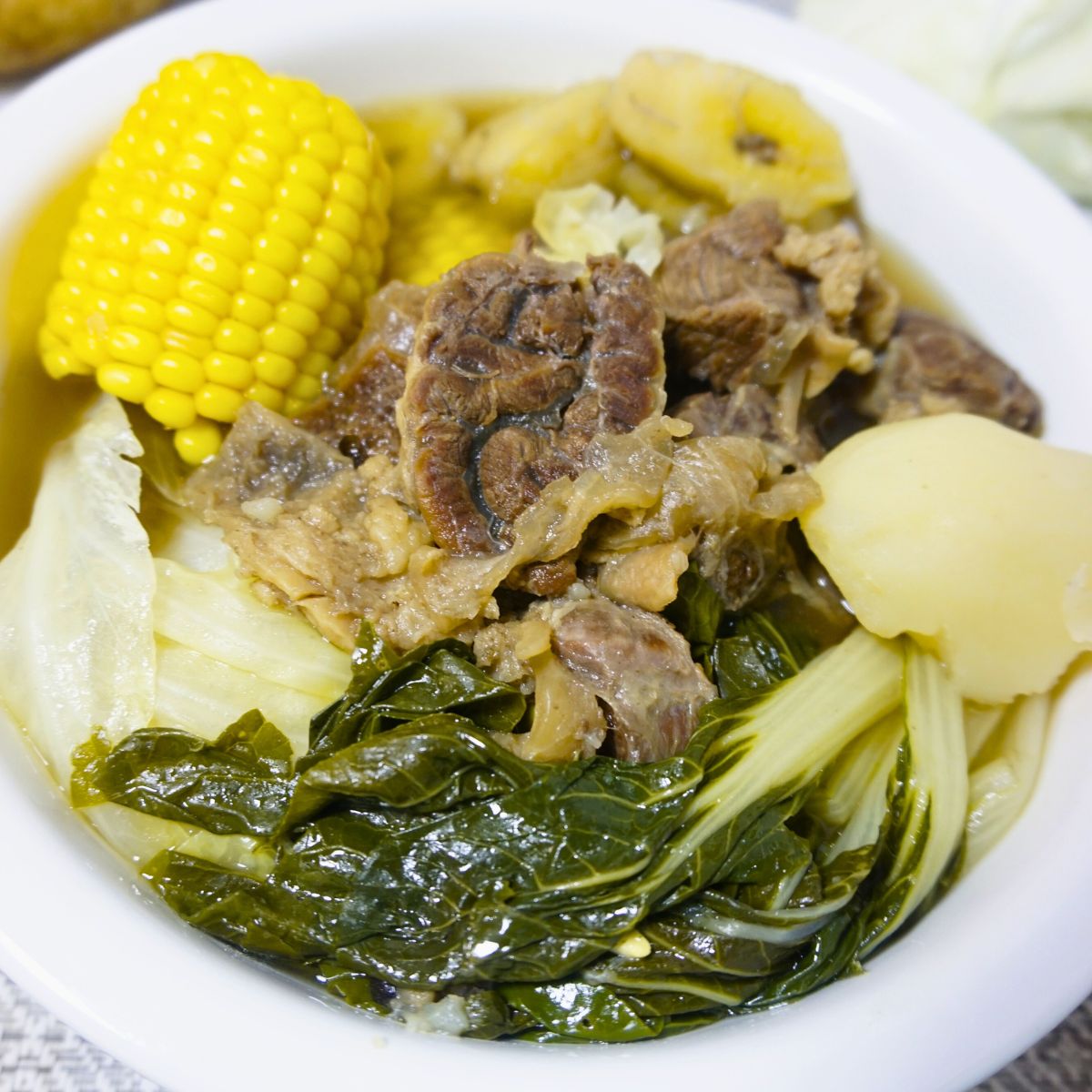
Tips in Cooking the Best Nilagang Baka
Choose Good Beef Shanks
Pick beef shanks with plenty of bone marrow. The marrow really adds richness to the broth. Fresh meat from a trusted source makes a big difference too. I always check for a good amount of marbling and bone marrow because it makes the broth more flavorful and satisfying.
Cook Slowly for Tender Meat
Take your time and cook the beef over low heat. You might lose patience waiting for the beef to get tender, but it’s worth it. The slow cooking process breaks down the tough fibers, making the meat juicy and tender. Trust me, it makes a big difference in the final dish!
Skim the Foam
When the broth starts boiling, you’ll notice some foam on top. Skim it off to keep the broth clear and clean-tasting.
Add Vegetables at the Right Time
Put in the potatoes and corn first since they take longer to cook. Add the leafy greens like cabbage and pechay closer to the end so they don’t get overcooked.
Frequently Asked Questions
Yes, you can use other cuts like beef chuck or brisket, but beef shanks are ideal for their bone marrow and rich flavor. Just make sure to adjust cooking times accordingly.
Yes, a slow cooker is a great option. Just add all the ingredients and cook on low for 6-8 hours for tender meat and flavorful broth.
If it’s too salty, add a bit of water or more vegetables like potatoes or cabbage to balance out the flavor. You can also add a peeled potato and simmer it in the soup to absorb some of the salt.
Yes, Nilagang Baka can be made ahead and stored in the refrigerator for up to 3 days. Reheat gently on the stovetop. The flavors tend to develop more after resting.

Nilagang Baka (Boiled Beef Soup)
Ingredients
- 1 kg Beef Shanks
- 10 cups Water
- 1 piece Onion large(quartered)
- 1 tsp Black Pepper (whole)
- 2 tbsp Fish Sauce
- 2 pcs Corn Cobs (cut in half)
- 2 pcs Potatoes (quartered)
- 3 pcs Saba Bananas (cut in half)
- 1/2 head Cabbage (quartered)
- 2 bunch Pechay (separated into leaves)
- Salt to taste
Instructions
- In a large pot, combine the beef shanks and 10 cups of water. Bring to a boil over medium heat. Skim off any scum that rises to the surface to keep the broth clear.
- Once the scum is removed, add the quartered onion and whole black pepper. Lower the heat and let it simmer for about 1.5 to 2 hours, or until the beef is tender. If you have a pressure cooker, you can cook the beef for 30-40 minutes to save time.
- Once the beef is tender, add the fish sauce and stir.
- Add the corn pieces and quartered potatoes to the pot. Simmer for about 10-15 minutes, or until the potatoes are tender.
- Add the saba bananas and continue simmering for another 5-7 minutes until the bananas are cooked through.
- Finally, add the cabbage quarters and pechay. Simmer for another 2-3 minutes, just until the vegetables are tender but still crisp.
- Taste the broth and season with salt as needed.
- Serve hot with steamed rice and enjoy!
Video
